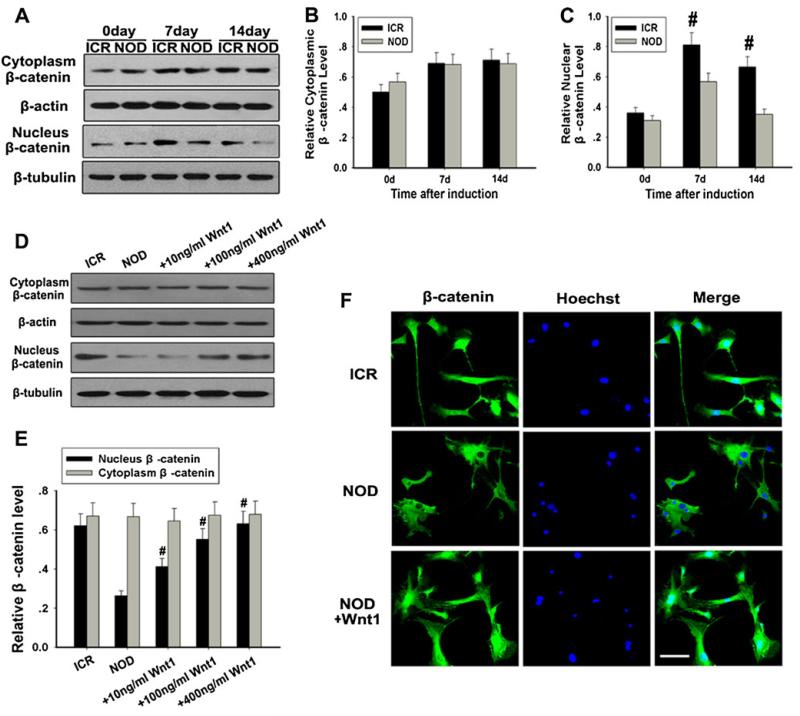Fig. 4.
Analysis of the cytoplasmic and nuclear β-catenin in NOD-MSCs. a Western blot analysis of the cytoplasmic and nuclear β-catenin expressions after BDNF, NGF, and bFGF induction for 7 and 14 days. β-Actin was used as the internal control for the cytoplasmic proteins, whereas β-tubulin was used as the internal control for the nuclear proteins. b Quantification of the cytoplasmic β-catenin expressions after induction. c Quantification of the nuclear β-catenin expressions after induction. Total β-catenin in the nucleus was significantly lower in NOD-MSCs than in ICR-MSCs after BDNF, NGF, and bFGF treatment for 7 and 14 days. There was no change of total β-catenin in the cytoplasm between NOD-MSCs and ICR-MSCs (#P<0.05; n=5). d Western blot analysis of the cytoplasmic and nuclear β-catenin expressions after treatment with Wnt1 (10–400 ng/ml). β-Actin was used as the internal control for the cytoplasmic proteins, whereas β-tubulin was used as the internal control for the nuclear proteins. e Quantification of the cytoplasmic and nuclear β-catenin protein levels after treatment with Wnt1 (10–400 ng/ml). Wnt1 concentrations >100 ng/mL were sufficient to increase nuclear β-catenin expression. There was no change of total β-catenin in the cytoplasm of NOD-MSCs after different concentrations of Wnt1 (#P<0.05; n=5). f Immunofluorescence staining of β-catenin. The immunofluorescence staining of β-catenin in the cellular nucleus of NOD-MSCs had a low intensity compared with that in the ICR-MSCs after treatment with 400 ng/ml Wnt1, while the nuclear β-catenin expression significantly increased. Scale bar=25 μm

